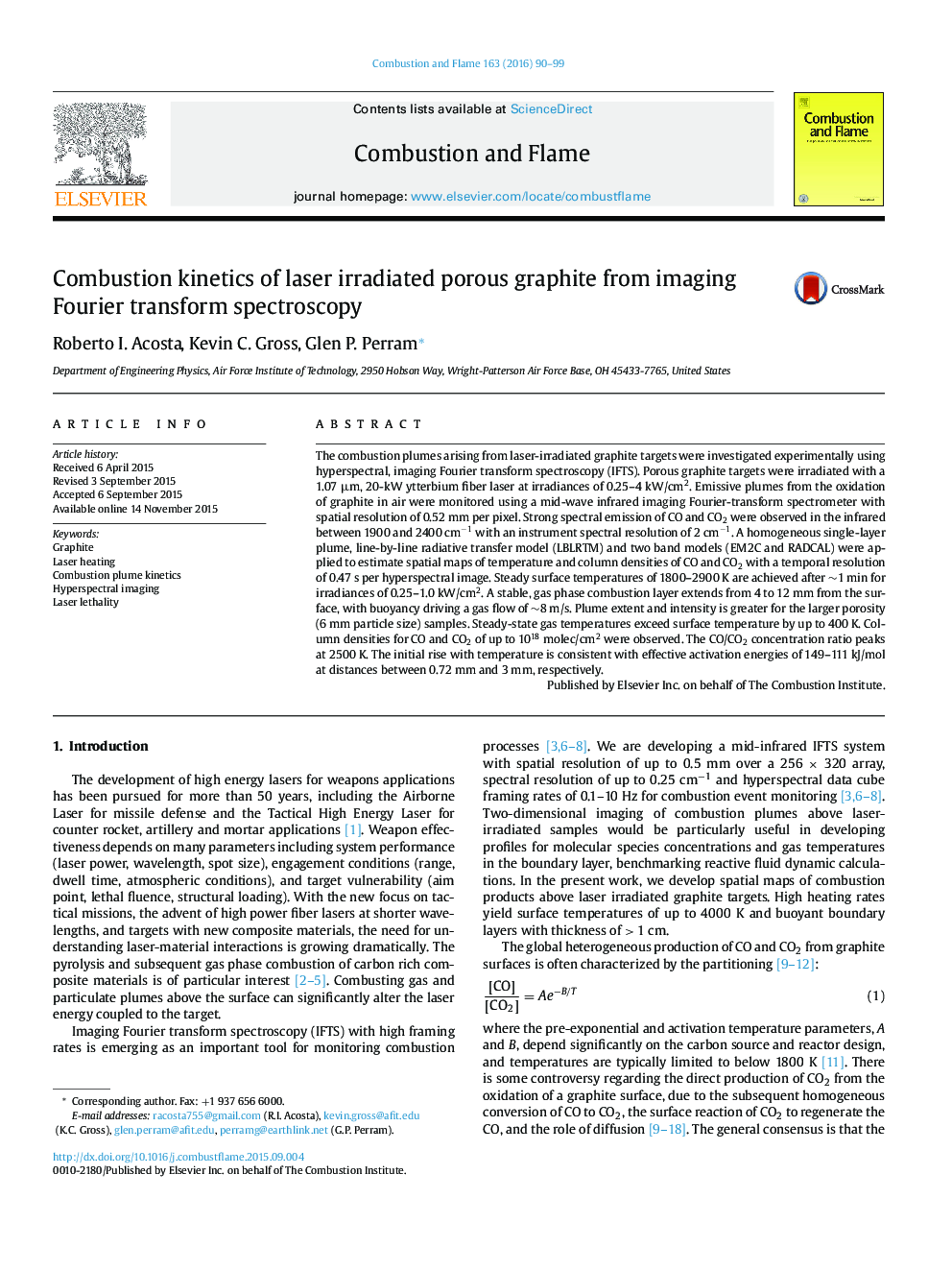| Article ID | Journal | Published Year | Pages | File Type |
|---|---|---|---|---|
| 6594346 | Combustion and Flame | 2016 | 10 Pages |
Abstract
The combustion plumes arising from laser-irradiated graphite targets were investigated experimentally using hyperspectral, imaging Fourier transform spectroscopy (IFTS). Porous graphite targets were irradiated with a 1.07 µm, 20-kW ytterbium fiber laser at irradiances of 0.25-4 kW/cm2. Emissive plumes from the oxidation of graphite in air were monitored using a mid-wave infrared imaging Fourier-transform spectrometer with spatial resolution of 0.52 mm per pixel. Strong spectral emission of CO and CO2 were observed in the infrared between 1900 and 2400 cmâ1 with an instrument spectral resolution of 2 cmâ1. A homogeneous single-layer plume, line-by-line radiative transfer model (LBLRTM) and two band models (EM2C and RADCAL) were applied to estimate spatial maps of temperature and column densities of CO and CO2 with a temporal resolution of 0.47 s per hyperspectral image. Steady surface temperatures of 1800-2900 K are achieved after â¼1 min for irradiances of 0.25-1.0 kW/cm2. A stable, gas phase combustion layer extends from 4 to 12 mm from the surface, with buoyancy driving a gas flow of â¼8 m/s. Plume extent and intensity is greater for the larger porosity (6 mm particle size) samples. Steady-state gas temperatures exceed surface temperature by up to 400 K. Column densities for CO and CO2 of up to 1018 molec/cm2 were observed. The CO/CO2 concentration ratio peaks at 2500 K. The initial rise with temperature is consistent with effective activation energies of 149-111 kJ/mol at distances between 0.72 mm and 3 mm, respectively.
Related Topics
Physical Sciences and Engineering
Chemical Engineering
Chemical Engineering (General)
Authors
Roberto I. Acosta, Kevin C. Gross, Glen P. Perram,
